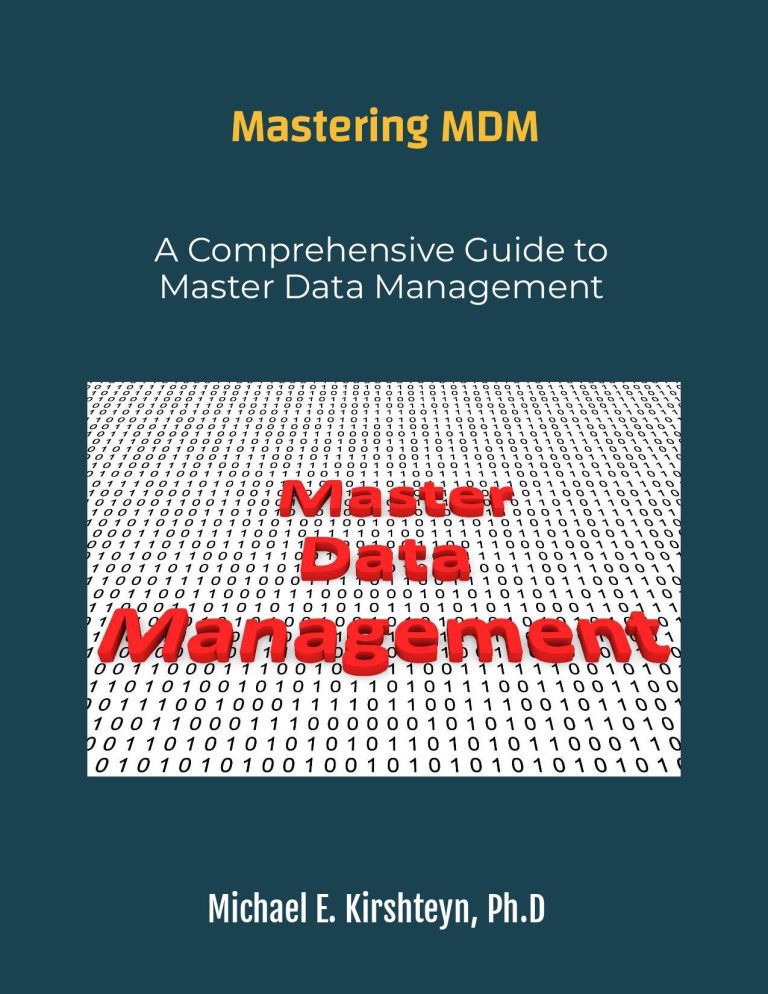Mastering MDM
A Comprehensive Guide to Master Data Management
In the dynamic world of data management, where the strategic use of information is paramount, Master Data Management emerges as a pivotal discipline. This synopsis encapsulates the essence of our comprehensive exploration into Master Data Management, shedding light on its definitions, applications, and future trajectories.
Introduction:
- We embark on our journey by defining Master Data Management as the disciplined process of structuring an organization's critical data entities, relationships, and attributes. The introduction establishes its crucial role in achieving strategic goals, informed decision-making, and regulatory compliance.
Fundamentals of Master Data:
- Delving into the core, we unravel the fundamental aspects of master data—its types, characteristics, and properties. This section lays the groundwork for a nuanced understanding of Master Data Management.
Importance in Data Management:
- The exploration underscores the strategic importance of Master Data Management in the broader context of data management. Its contributions to decision-making, regulatory compliance, and cost reduction become evident.
Historical Context:
- Providing historical context, we trace the evolution of Master Data Management, contextualizing its significance in the face of evolving technologies and business landscapes.
Key Components:
- We dissect the key components of Master Data Management, from entities and attributes to relationships, hierarchies, and metadata. These elements form the building blocks of a robust Master Data Model.
Benefits:
- A dedicated chapter unfolds the tangible benefits of Master Data Management, emphasizing its impact on data quality improvement, enhanced decision-making processes, regulatory compliance, and substantial cost reduction.
Data Governance and Management:
- Recognizing the symbiotic relationship, the exploration navigates through the interplay between Master Data Management and Data Governance. The document emphasizes the critical role of governance in ensuring the integrity, security, and compliance of master data.
Modeling Techniques:
- The techniques employed in Master Data Management take center stage, showcasing the application of Entity-Relationship Modeling (ERM), Unified Modeling Language (UML), and advanced data modeling tools.
Implementation and Case Studies:
- Practical insights come to the fore as the document addresses implementation steps, challenges, and solutions. Real-world case studies illuminate the successes and applications of Master Data Management across diverse industries.
Industry-Specific Considerations:
- A dedicated exploration into industry-specific considerations reveals how Master Data Management plays a pivotal role in finance, healthcare, retail, and manufacturing.
Future Trends:
- Peering into the future, we anticipate trends such as Artificial Intelligence, Machine Learning, Blockchain, and evolving standards that will shape the landscape of Master Data Management.
Practical Tips and Lessons Learned:
- The document concludes with practical tips for successful implementation, lessons learned from real-world scenarios, and a call to action. These insights empower organizations to embark on their Master Data Management journey with confidence.
This synopsis encapsulates the comprehensive narrative of our exploration into Master Data Management —an odyssey that transcends technicalities, emphasizing the strategic impact of this discipline on organizational success in the digital era.
©Copyright. All rights reserved.
We need your consent to load the translations
We use a third-party service to translate the website content that may collect data about your activity. Please review the details in the privacy policy and accept the service to view the translations.
